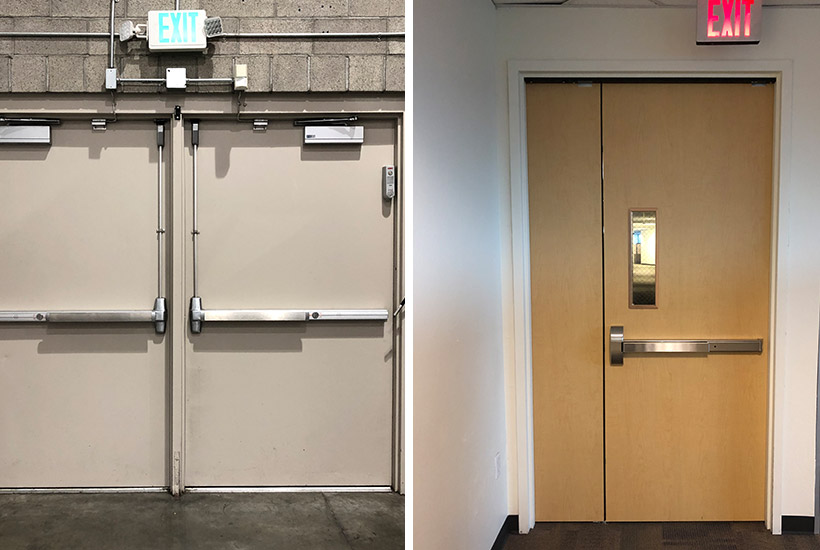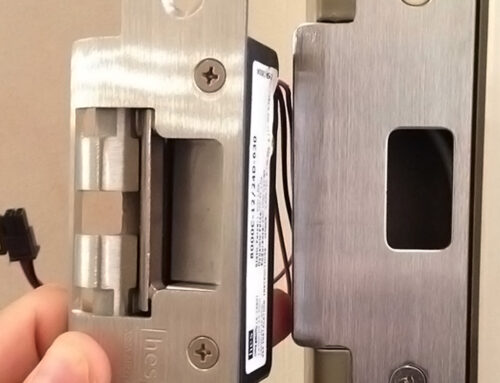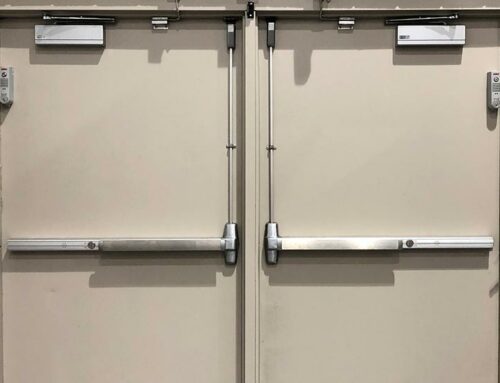A surface vertical rod (SVR) and a push bar are both types of exit devices commonly used in commercial buildings to provide a means of egress in case of emergencies. While both serve the same fundamental purpose – allowing people to exit a building quickly and safely – there are situations where an SVR can be a better choice than a push bar. Let’s explore the advantages of SVRs over push bars and discuss specific applications where this difference can have a significant impact.
Advantages of Surface Vertical Rods (SVRs)
- Enhanced security: SVRs typically provide better security compared to push bars. They are often equipped with multiple locking points that engage with the door frame, making it more difficult for unauthorized individuals to force the door open. This feature is especially important in high-security environments such as hospitals, laboratories, and government facilities.
- Durability: SVRs are designed to withstand heavy use and abuse, making them a more durable choice in environments where the exit doors may be subjected to frequent and rough handling. This durability can result in cost savings over time, as SVRs require less maintenance and replacement.
- Aesthetics: SVRs offer a cleaner and more streamlined appearance than push bars. This can be an important consideration in upscale commercial settings, hotels, or buildings with a strong focus on architectural aesthetics. SVRs can be less obtrusive and blend better with the overall design.
- Ease of use: While push bars are generally easy to operate, SVRs can provide a more intuitive and user-friendly experience, especially for individuals who may not be familiar with the specific exit device. SVRs often feature large, vertical handles that are easy to grasp, making them more accessible to a wider range of users.
- Narrow stile doors: SVRs are particularly well-suited for narrow stile doors, which are commonly used in commercial and retail settings. Their vertical design allows for efficient use of limited door space, making them an ideal choice for locations where space is at a premium.
Applications Where SVRs Make a Bigger Difference
- High-security facilities: In facilities where security is a top priority, such as banks, data centers, and government buildings, SVRs are often preferred due to their enhanced locking mechanisms. They provide an added layer of protection against unauthorized access.
- Healthcare facilities: Hospitals and healthcare centers often use SVRs on emergency exit doors. These devices are more durable and easier to sanitize, which is crucial in healthcare settings where hygiene is a top concern.
- Historic buildings: In historic buildings or locations with strict architectural preservation requirements, SVRs may be favored because of their ability to blend seamlessly with the building’s design while still providing the required safety features.
- Retail environments: SVRs are well-suited for retail locations with narrow stile doors. They offer a clean and modern appearance that can enhance the overall shopping experience, and their durability ensures that they can withstand heavy customer traffic.
- Educational institutions: In schools and universities, where the safety of students and staff is paramount, SVRs can be a wise choice. Their durability and security features help ensure that exit doors function reliably and deter tampering.
While both surface vertical rods (SVRs) and push bars serve the fundamental purpose of providing a means of egress, SVRs offer advantages in terms of security, durability, aesthetics, ease of use, and suitability for specific applications. The choice between SVRs and push bars should be based on the specific needs and priorities of the building or facility in question. In high-security environments, historic buildings, healthcare facilities, and other settings where these advantages are crucial, SVRs can make a significant difference in both safety and functionality.







